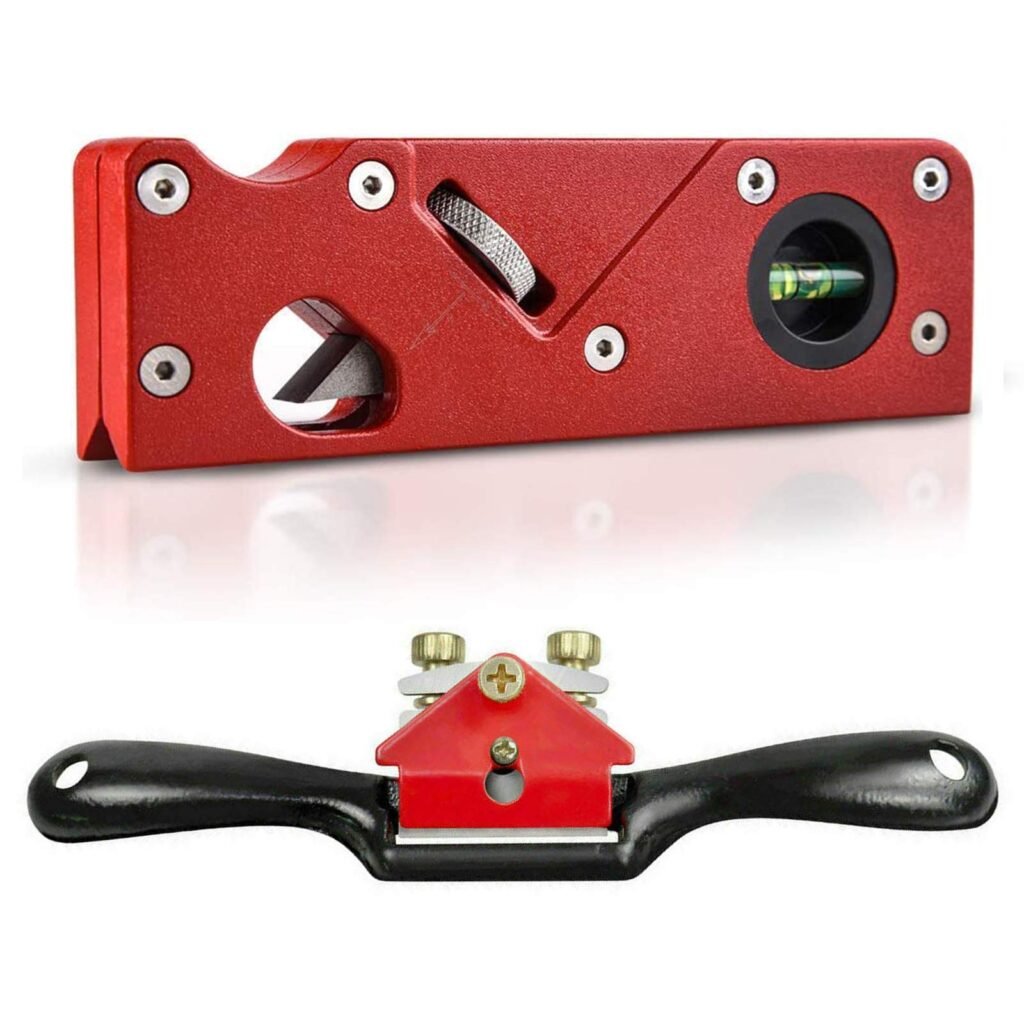Understanding the Purpose of an Edge Corner Plane
An edge corner plane is a versatile tool that is commonly used in woodworking. Its purpose is to shape and smooth the edges and corners of wooden boards, ensuring a precise and professional finish. This tool is especially useful for tasks such as creating chamfers, rounding over sharp corners, or even shaping intricate designs on the edges of woodwork.

The edge corner plane is designed with a sharp blade that shaves off small amounts of wood as it is pushed along the edge or corner of a board. This allows woodworkers to remove any rough or uneven areas and create a smooth, polished surface. The blade is typically adjustable, allowing for greater control over the depth and angle of the cut. With the right technique and careful attention, a woodworking edge corner plane can greatly enhance the quality and aesthetics of your projects.
Related:-Woodworking Jobs Near Me: Building a Career with Passion
Different Types of Edge Corner Planes Available
There are various types of edge corner planes available in the market, each designed to fulfill specific woodworking needs. One popular type is the block plane, which is compact and versatile. It is perfect for trimming, smoothing, and chamfering the edges and corners of wooden pieces. The block plane typically has a low angle blade, allowing for precise and controlled cuts. Another type to consider is the shoulder plane, which excels in creating precise and flat shoulder cuts, especially when fitting tenons. Its blade extends all the way to the edges of the plane, ensuring accuracy and efficiency. Lastly, the rabbet plane is a specialized tool used for creating rabbets, dadoes, and grooves. Its adjustable depth stop and side fence allow for consistent and accurate cutting, making it an essential tool for joinery work. With these different types of edge corner planes available, woodworkers can choose the one that best suits their project requirements.
In addition to the block, shoulder, and rabbet planes, there are other lesser-known types of edge corner planes. The bullnose plane, for example, is a compact and versatile tool that excels in trimming and shaping small corners and edges. It is often used in tight spaces and fine detailing work. The router plane, on the other hand, is an innovative tool that combines the capabilities of a plane and a router. It is particularly useful for smoothing the bottom of grooves and recesses. The router plane comes with various interchangeable blades, allowing for flexibility and customization. These alternative types of edge corner planes offer woodworkers additional options and specialized features, enhancing their ability to achieve precise and professional results.
Exploring the Key Features of an Edge Corner Plane
The key features of an edge corner plane play a crucial role in its functionality and effectiveness in woodworking projects. One of the main features to consider is the blade or iron of the plane. It should be made of high-quality steel or carbon hardened material to ensure sharpness and durability. A sharp blade not only helps in precise cutting but also prevents tear-outs and splintering of the wood. Additionally, the width and the angle of the blade contribute to the efficiency of the plane. A wider blade allows for removing larger amounts of material at once, while a narrower blade is ideal for intricate detailing and smoothing out tight corners.

Another important feature of an edge corner plane is the body or the sole of the plane. It should be flat and smooth to facilitate easy gliding over the wood surface. A well-machined and accurately flattened sole ensures consistent and even results. The size and shape of the plane body also determine its versatility and maneuverability. A compact and lightweight plane is suitable for small-scale projects and for working in tight spaces, while a larger plane with a longer sole provides stability and control for larger woodworking tasks. Additionally, some edge corner planes come with adjustable features to modify the depth of the cut according to the requirements of the project. This allows for greater precision and customization in shaping and smoothing wood edges and corners.
Tips for Choosing the Right Edge Corner Plane for Your Woodworking Projects
For woodworkers, choosing the right edge corner plane is essential to achieve precise and accurate results in their projects. With numerous options available in the market, it can be overwhelming to make the right choice. However, by considering a few key factors, selecting the perfect edge corner plane can become a more manageable task.
Firstly, it is crucial to assess the size and weight of the edge corner plane. Different woodworking projects require specific dimensions and weights of planes. For smaller woodworking tasks, a compact and lightweight plane would be more suitable, while larger projects may demand a heavier and sturdier plane. Evaluating the scale of your projects and matching it with the appropriate plane size will ensure optimal performance. Additionally, it is important to consider the quality and material of the plane’s cutting edge. High-quality blades made from durable materials, such as carbon or high-speed steel, will provide longevity and maintain sharpness, resulting in cleaner and smoother cuts.
Step-by-Step Guide to Properly Using an Edge Corner Plane
The first step in using an edge corner plane is to prepare your workstation. Start by selecting a sturdy workbench or table where you can securely clamp your workpiece. Make sure the surface is clean and free of any debris or obstacles that could interfere with the planing process. It’s also essential to wear appropriate safety gear such as safety glasses and ear protection to protect yourself from any potential hazards.
Once you have set up your workspace, you can proceed to set the depth and angle of the cutting iron. This can be done by adjusting the lever or screw located at the front of the plane. The depth should be set so that only a thin shaving of wood is removed with each pass, while the angle should be adjusted according to the type of wood and desired result. It’s always recommended to start with a shallow depth and gradually increase it to avoid any unwanted mishaps. With the cutting iron properly set, you are now ready to begin the planing process.
Common Mistakes to Avoid When Using an Edge Corner Plane
Using an edge corner plane can greatly enhance the accuracy and efficiency of your woodworking projects. However, there are certain common mistakes that people often make when using this tool. One common mistake is applying too much pressure on the plane. It is important to remember that the plane’s sharp cutting edge is designed to do the work, so there is no need to exert excessive force. Applying too much pressure can result in uneven and inconsistent cuts, leading to a less than desirable outcome.
Another mistake to avoid is neglecting to maintain the plane’s blade. Over time, the blade may become dull or accumulate debris, which can affect its performance. It is crucial to regularly inspect and sharpen the blade to ensure optimal results. Additionally, keep in mind that the blade should be properly aligned with the sole of the plane. Misalignment may cause the plane to create uneven cuts or even damage the wood being worked on. By prioritizing regular blade maintenance and ensuring proper alignment, you can avoid unnecessary frustration and achieve better woodworking outcomes.
What is the purpose of an edge corner plane?
The purpose of an edge corner plane is to shape and smooth the edges and corners of wooden surfaces, allowing for precise and efficient woodworking.
What are the different types of edge corner planes available?
There are various types of edge corner planes available, including shoulder planes, chisel planes, router planes, and combination planes. Each type is designed for specific woodworking tasks.
What are the key features to consider when choosing an edge corner plane?
When selecting an edge corner plane, factors to consider include the size and weight of the plane, the type of blade it uses, the adjustability of the blade depth, and the overall quality and durability of the tool.
How can I choose the right edge corner plane for my woodworking projects?
To choose the right edge corner plane, consider the specific tasks you will be performing, the type of wood you will be working with, and your personal preferences in terms of comfort and usability. It is also helpful to read reviews and seek recommendations from experienced woodworkers.
What is the proper way to use an edge corner plane?
Proper usage of an edge corner plane involves holding the tool firmly, aligning the blade with the wood surface, and making controlled and consistent passes along the edges or corners to achieve the desired shape or smoothness.

What are some common mistakes to avoid when using an edge corner plane?
Some common mistakes to avoid when using an edge corner plane include applying too much force, neglecting to adjust the blade depth properly, failing to maintain a consistent angle, and using the tool on unsuitable wood grain patterns.




